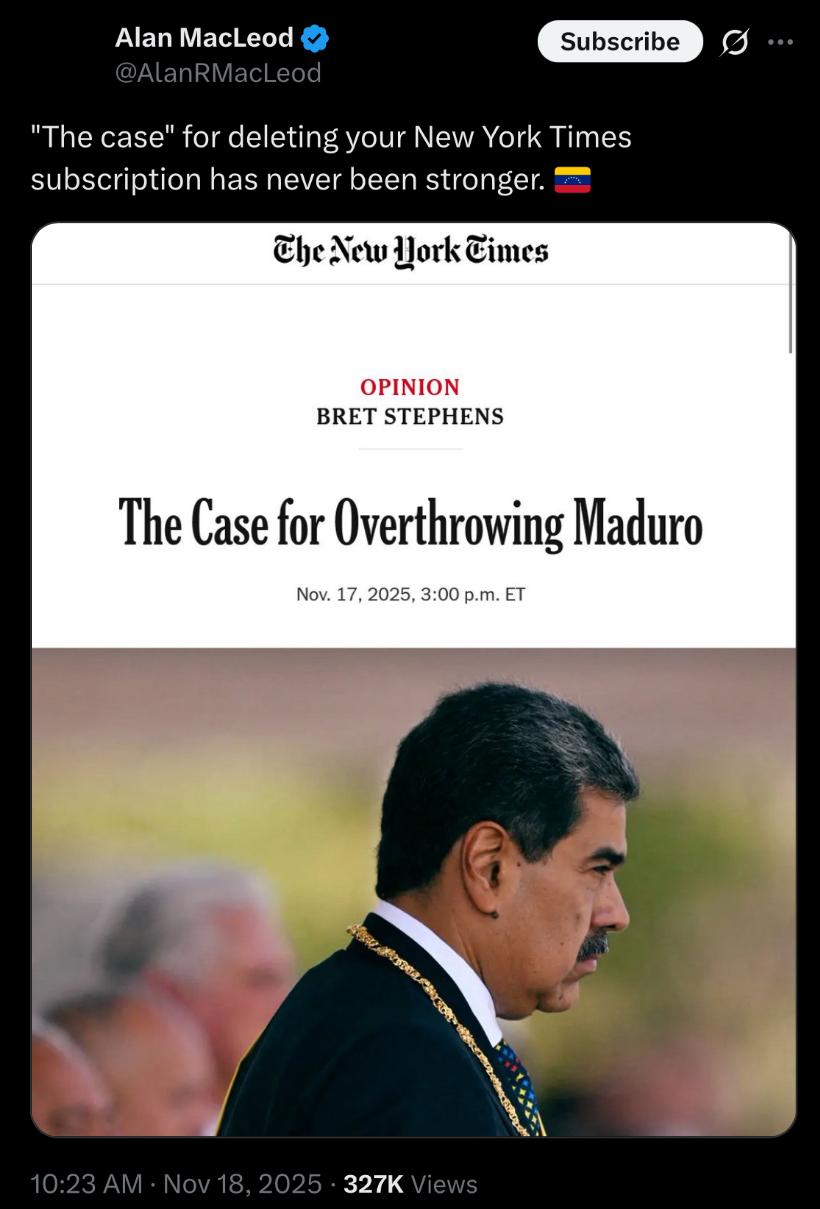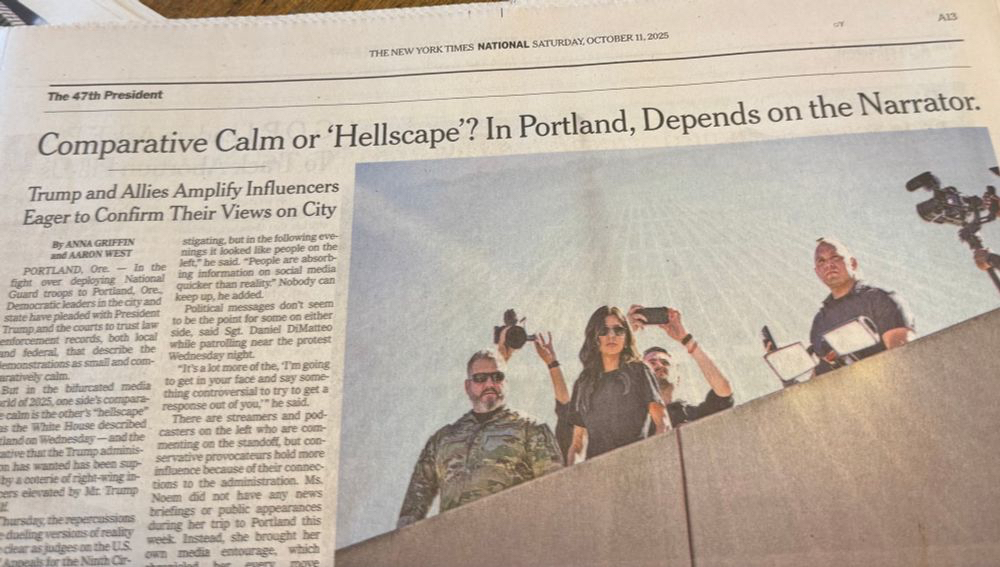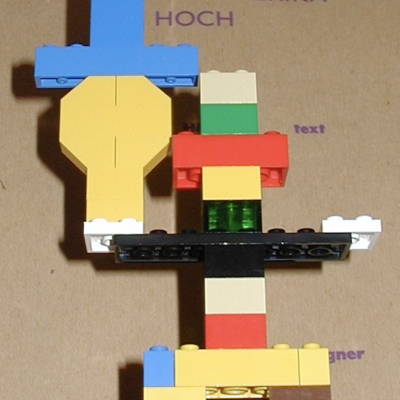Margaret Sullivan looks at three gross ethical lapses of US journalists that came to light in one week, making the week "journalism's week of shame" in the words of Jill Abramson.
Sullivan looks at the cases of Michael Wolff, Landon Thomas Jr., and Olivia Nuzzi.
Recently released emails show Wolff, while reporting on Epstein, coaching him on how to manipulate Trump.
#journalism #ethics #media #CorporateMedia #Epstein #Trump #RFKJr #NewYorkTimes
/1
https://margaretsullivan.substack.com/p/three-ugly-lessons-in-unethical-media
Margaret Sullivan looks at three gross ethical lapses of US journalists that came to light in one week, making the week "journalism's week of shame" in the words of Jill Abramson.
Sullivan looks at the cases of Michael Wolff, Landon Thomas Jr., and Olivia Nuzzi.
Recently released emails show Wolff, while reporting on Epstein, coaching him on how to manipulate Trump.
#journalism #ethics #media #CorporateMedia #Epstein #Trump #RFKJr #NewYorkTimes
/1
https://margaretsullivan.substack.com/p/three-ugly-lessons-in-unethical-media













